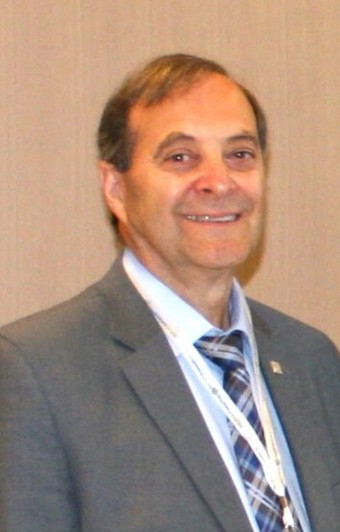
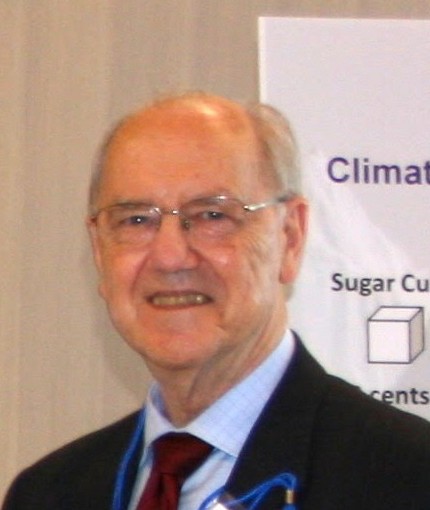
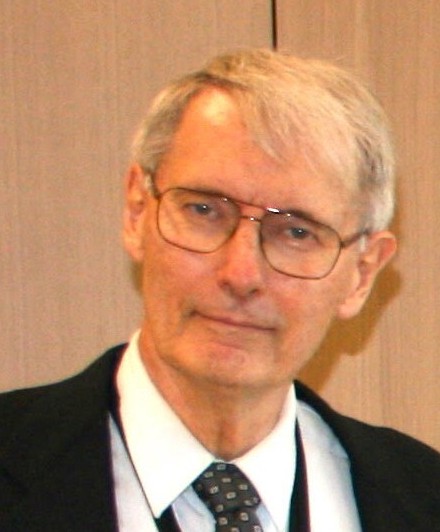
May 28, 2018 photos of the INZEM Team members consisting of from top left to right: Paul Acchione; Peter Ottensmeyer; Charles Rhodes.
| Home | Energy Physics | Nuclear Power | Electricity | Climate Change | Lighting Control | Contacts | Links |
|---|
INTEGRATED ZERO EMISSION (INZEM) ENERGY PLAN
The Integrated Zero Emission Energy Plan is an engineering plan for completely replacing Canadian fossil fuel supplied heat and energy with non-fossil heat and energy by the year 2070. Implementation of this plan is dependent on governmental policy changes relating to public education, proper pricing of electricity, nuclear reactor safety, recycling of spent nuclear reactor fuel and elimination of nuclear waste.
The INZEM plan involves efficient integration of: renewable energy generation, nuclear energy generation, electricity transmission and distribution, energy storage, district heating, electrolytic hydrogen and synthetic liquid fuels. Successful implementation of this plan requires immediate ceasing of investment in new fossil fuel infrastructure such as the Trans-Mountain Pipeline capacity expansion to more beneficially use the same money and to prevent that infrastructure becoming a stranded asset.
The INZEM Plan was developed during the period November 2017 to May 2018 by three senior engineers, Paul Acchione M. Eng, P. Eng, FCAE; Peter Ottensmeyer B. A. Sc, Ph. D., FRSC; and Charles Rhodes M. A. Sc., Ph. D., P. Eng., collectively with about 150 years of complementary relevant experience in energy and electricity related matters.



May 28, 2018 photos of the INZEM Team members consisting of from top left to right: Paul Acchione; Peter Ottensmeyer; Charles Rhodes.
INZEM VIDEOS, SLIDES AND POSTERS:
The Integrated Zero Emission (INZEM) plan for economically eliminating CO2 emissions from heat and energy production is described in the:
INZEM Concept Presentation
and
INZEM Energy 2 Minute Video (CanInfra)
or
INZEM Energy 2 Minute Video (Google Drive)
or
INZEM Energy 2 Minute Video (YouTube)
or
INZEM Energy 2 Minute Video (Xylene)
The script for a 5 minute INZEM presentation is available at:
INZEM 5 minute presentation script
and the supporting slides for that presentation are at:
INZEM slides for 5 minute presentation in ppt format
or
INZEM slides for 5 minute presentation in pptx format
The INZEM 5 minute video is available at:
INZEM Energy 5 Minute Video (You Tube)
or
INZEM Energy 5 Minute Video (CanInfra).
For further information relating to these videos and supporting slides please contact:
Peter.Ottensmeyer@utoronto.ca
INZEM conceptual information is provided on the:
18 inch X 24 inch Sugar Cube Poster
or on the
24 inch X 36 inch Sugar Cube Poster
Quantitative details relating to INZEM are contained on the
2 Page INZEM Handout
and at:
2 Page INZEM Handout
and on the
2018 10 page INZEM Energy Slide Set
and on the:
2019 Spread Sheet Setting Out The Canadian Non-Fossil Energy System Requirements For Compliance With The 2015 Paris Agreement By The Year 2070
Note that the 2019 Spread Sheet provides for more electrolytic hydrogen production than was included in the 2018 calculations. The hydrogen would be distributed via the existing repurposed natural gas distribution system in urban areas and via liquid ammonia and/or liquid methyl cyclohexane in rural areas.
For further information relating to the Posters, Handout, Slides and Spread Sheet please contact Paul Acchione at PaulAcchione@gmail.com
The major results of the INZEM study are set out on the following graphs:

Note that no matter what other policies governments adopt Canada's 2015 Paris Agreement obligations cannot be met if the Trans-Mountain Pipeline capacity expansion is permitted to proceed. Even if this pipeline expansion is cancelled the Paris Agreement target for 2030 is unachievable due to Canadian federal and provincial governments failing to promptly adopt essential energy policy changes. Paris agreement compliance requires that most Canadian provinces immediately embrace electricity price structure changes and large scale nuclear power production.
The irresponsible behaviour by Canadian political leaders during 2019 is a clear and present danger to the lives of younger Canadians.
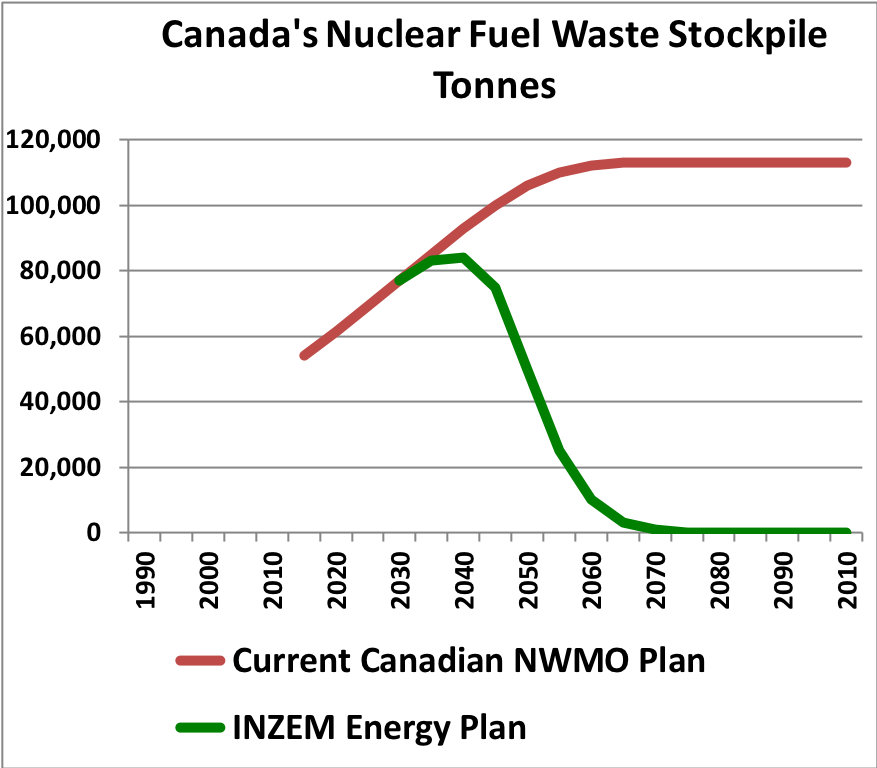
To make nuclear power sustainable and economic, to safely dispose of the existing stockpile of long lived nuclear waste and to prevent further formation of long lived nuclear waste the federal government must also embrace rapid development of liquid sodium cooled Fast Neutron Reactors and related non-aqueous fuel recycling technology. The present NWMO plan to bury used CANDU fuel is unsustainable, uneconomic and unacceptable.
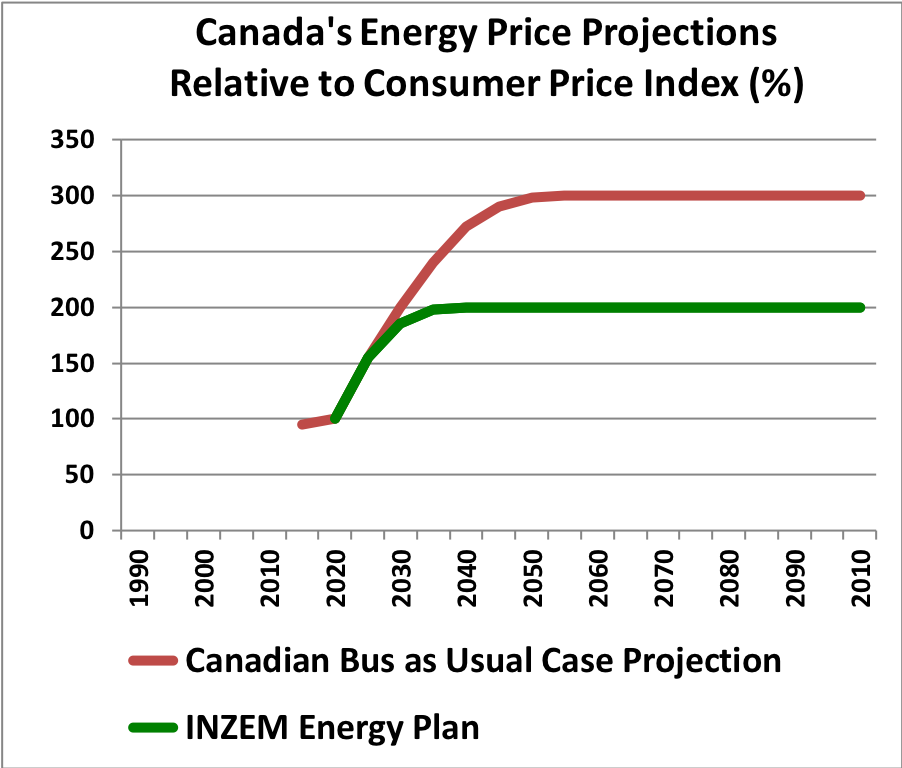
The INZEM Plan uses a combination of new technologies that if applied together will reduce the blended cost of energy to the end user by at least 33% as compared to alternative non-fossil energy technologies.
NEW TECHNOLOGIES:
In addition to renewable energy generation INZEM relies on integration of the technologies:
INTERRUPTIBLE ELECTRICITY
and
FAST NEUTRON REACTORS
and
OTTENSMEYER PLAN FOR NUCLEAR FUEL RECYCLING
and
ELECTROLYTIC HYDROGEN
For further information relating to these new technologies please contact Charles Rhodes at Charles.Rhodes@xylenepower.com
INZEM ENERGY SYSTEM DESIGN PRINCIPLES:
1) Do not use fossil carbon either for energy production or as a component of a construction material exposed to sunlight (eg asphalt driveways, asphalt shingles).
2) Recycle all plastic resin refuse.
3) Price non-fossil electricity to correctly recover both the marginal cost of supplying monthly dependable peak power (kWe) and the marginal cost of supplying additional energy (kWhe) with no increase in monthly peak power. The end user cost of a non-fossil interruptible electrical kWhe must be less than the end user cost of a competitive fossil fuel supplied thermal kWht. The remaining electricity revenue requirement must be met via the charge per monthly dependable peak kWe. The time period over which the monthly peak kWe is calculated and the precise manner of calculation must be specified. Typically this time period is in the range 5 minutes to 2 hours. Typically the 90% step response time is in the range 15 minutes to 4.5 hours. The load diversity of small consumers allows use of a longer time period.
4) Use non-fossil interruptible electricity for production of electrolytic hydrogen and low grade heat.
5) Locate the hydrogen producing electrolysers where the waste heat from the electrolysis process can be used to advantage (biomass drying on farms and forest plantations, heating of large buildings).
6) Use the electrolytic hydrogen gas either directly as an energy source or as a feedstock to produce synthetic liquid fuels such as methanol and ammonia.
7) Transport the methanol to a refinery to upgrade it into aircraft fuel.
8) Use the abundant fertile isotopes Th-232 and U-238 as nuclear fuels.
9) Via neutron capture transmute Th-232 and U-238 into the fissile isotopes U-233 and Pu-239. Then use the fissile isotopes in a nuclear chain reaction to obtain energy and fission products.
10) Design the equipment to prevent formation of the long lived low atomic weight isotopes (C-14, Cl-36, Ca-41, Ni-59).
11) Use non-aqueous electrolytic fuel reprocessing to recover the newly formed fissile isotope atoms.
12) Recycle nuclear fuel by separation of the low atomic weight fission products from the high atomic weight nuclear fuel elements.
13) Use a dry chloride process to selectively extract zirconium from the low atomic weight fission products.
14) Blend extracted zirconium with the separated high atomic weight nuclear fuel elements to form new fast neutron reactor fuel rods.
15) Safely store the remaining fission product chlorides for 300 years in water tight porcelain containers to allow natural decay of the short lived radio isotopes.
16) Use distributed small modular fast neutron reactors to to meet the electricity and heat base loads while minimizing electricity and heat transmission distances.
17) Use small truck portable reactor modules to enable efficient module: manufacture, testing, installation and repair.
18) Use a fast neutron spectrum, Fe-Cr fuel tubes and a liquid sodium guard band to prevent formation of long lived nuclear waste.
19) Deliver heat via district heating systems with terminal heat pumps.
20) Realize seasonal energy storage via: hydroelectric storage dams, storage of compressed hydrogen gas in salt caverns and storage of synthetic liquid hydrocarbons on tank farms.
21) Transport and store bulk hydrogen by compounding it with toluene to form methyl cyclohexane. Reverse this chemical reaction to recover the hydrogen gas.
22) Use IESO dispatch control of hydrogen production and combustion turbo-generation to follow short term unconstrained renewable generation and load changes without curtailment of renewable non-fossil generation.
In the following video Michael Shellenberger and James Hansen address the issue: Nuclear Power? Are Renewables Enough?
In the following video Michael Shellenberger and Simon Irish address: Untying the Nuclear Knot
In March 2021 SNC Lavalin released its own plan for reducing Canada's CO2 emissions by 2050. The 28 page executive summary and the 100 page detailed report are available at:
Executive Summary
and
Technical Report
This author's immediate criticizm of these documents is that the Executive Summary conceals the essential massive nuclear new build and related capital commitments that are detailed in the Technical Report.
Very soon both provincial and federal politicians will have to face the magnitude of the required capital commitments.
This web page last updated September 2, 2019.
| Home | Energy Physics | Nuclear Power | Electricity | Climate Change | Lighting Control | Contacts | Links |
|---|